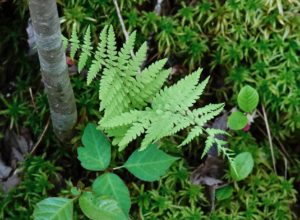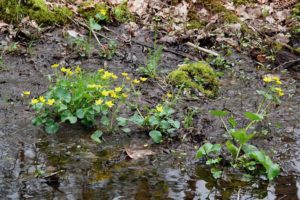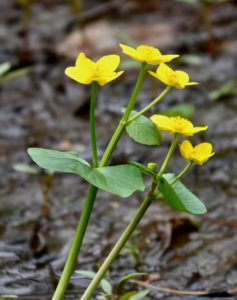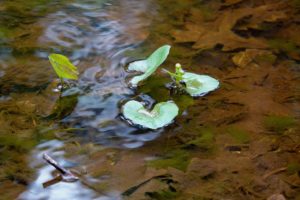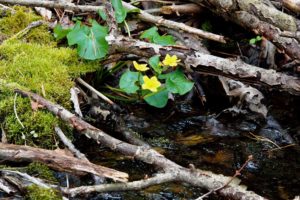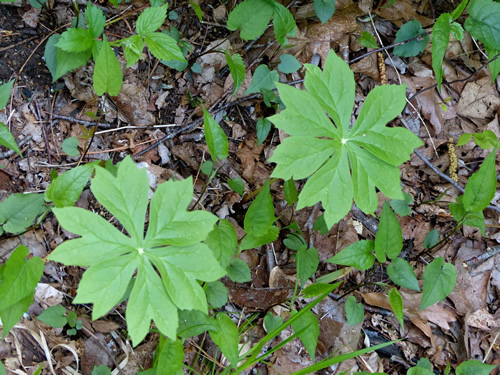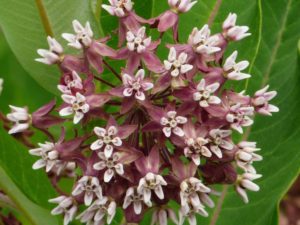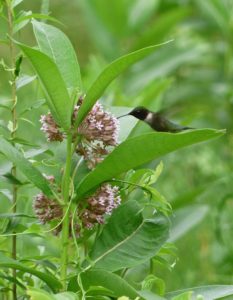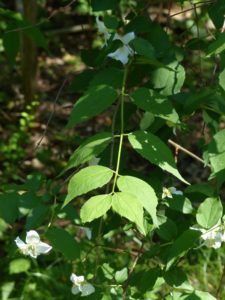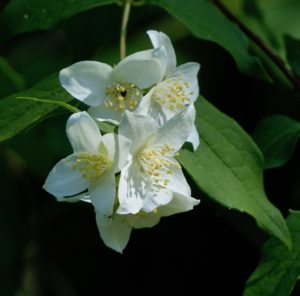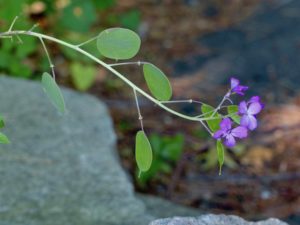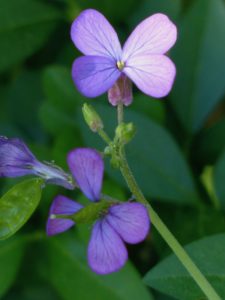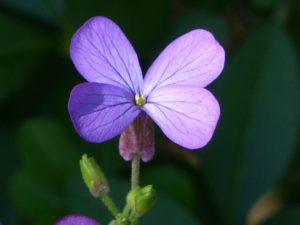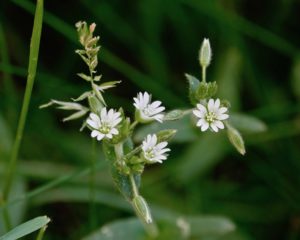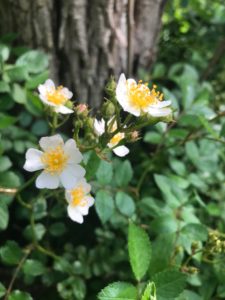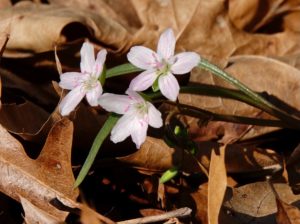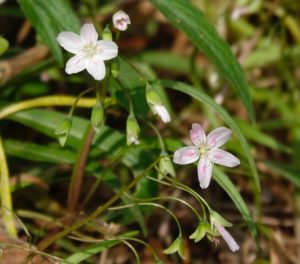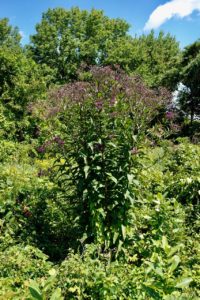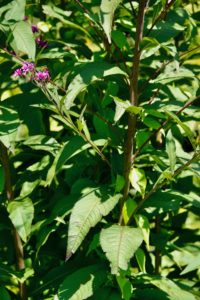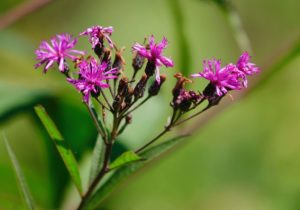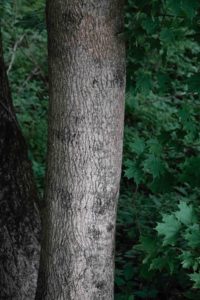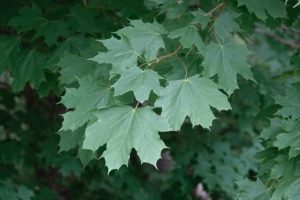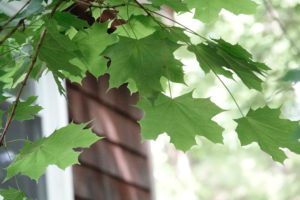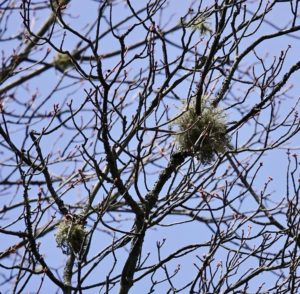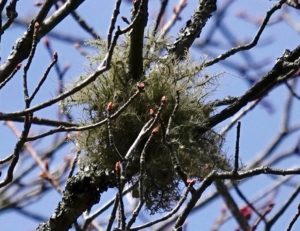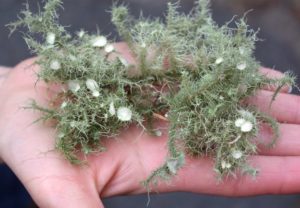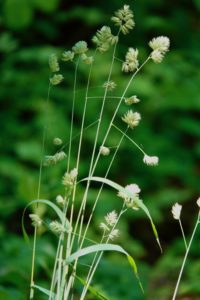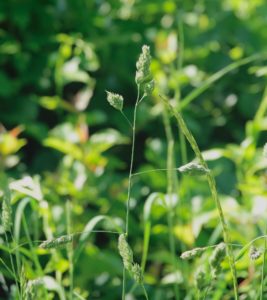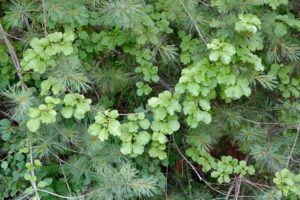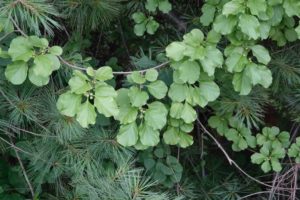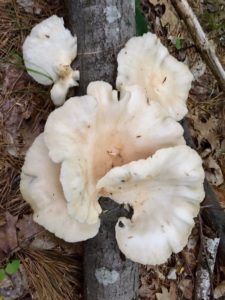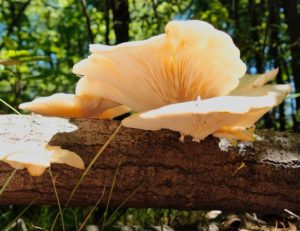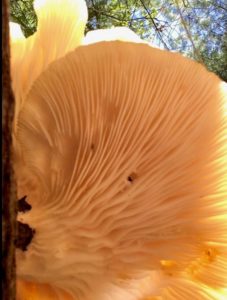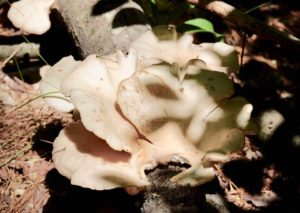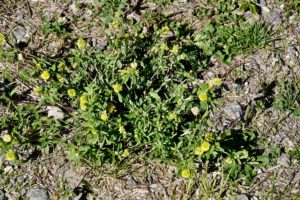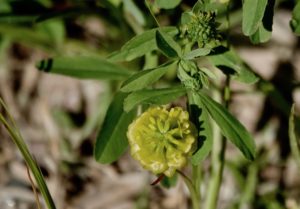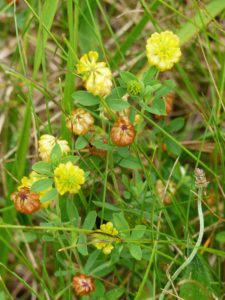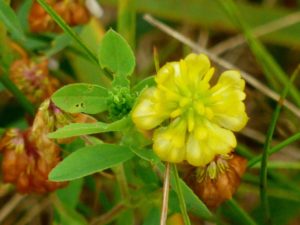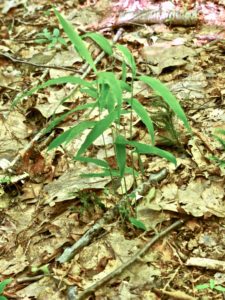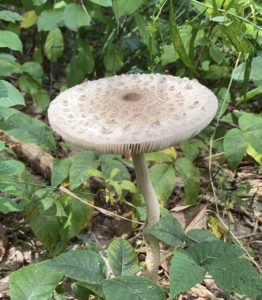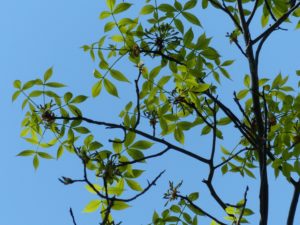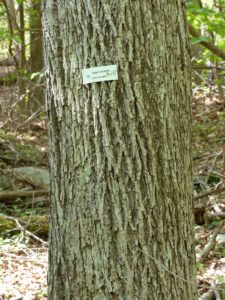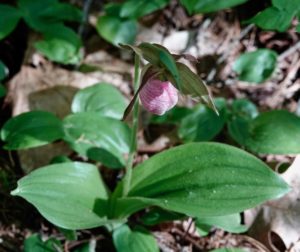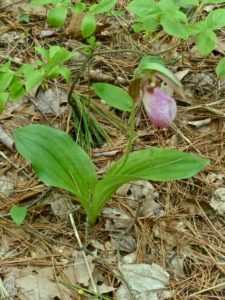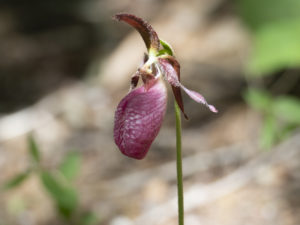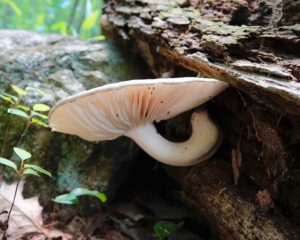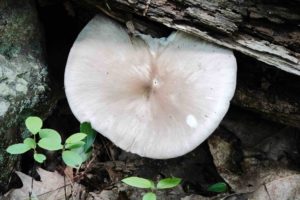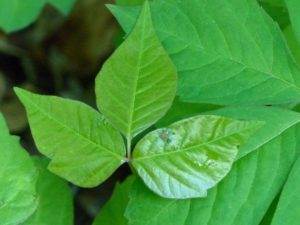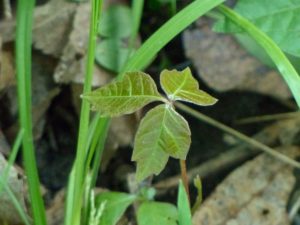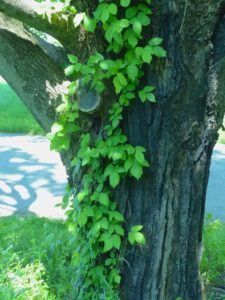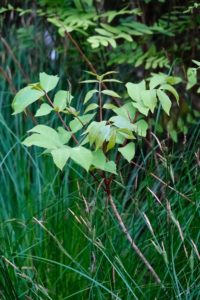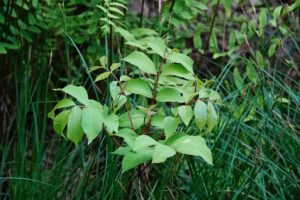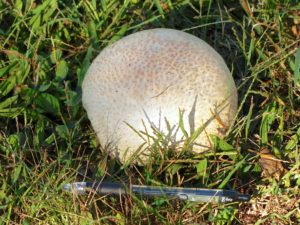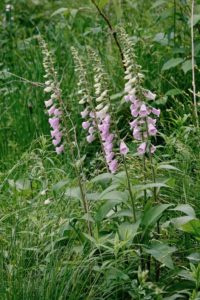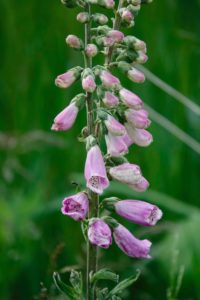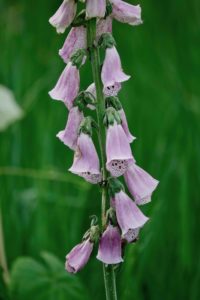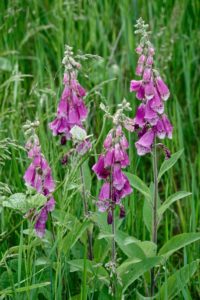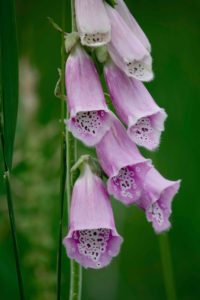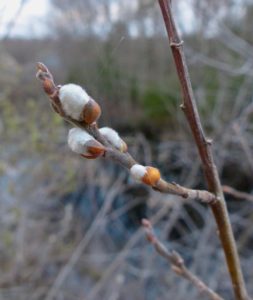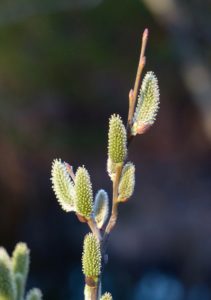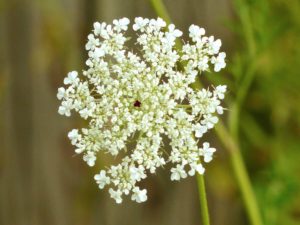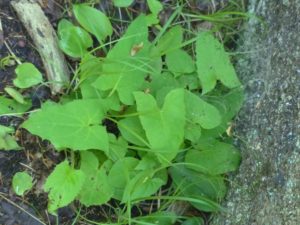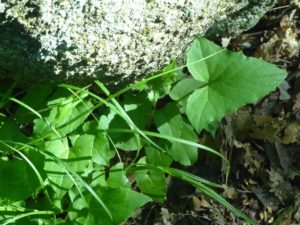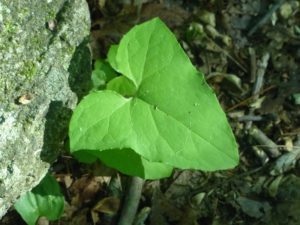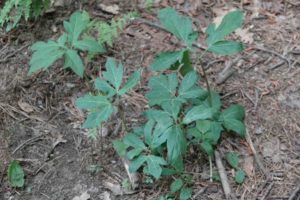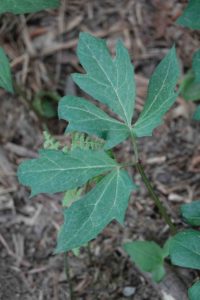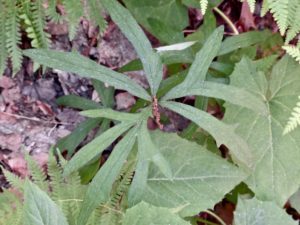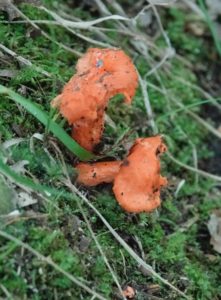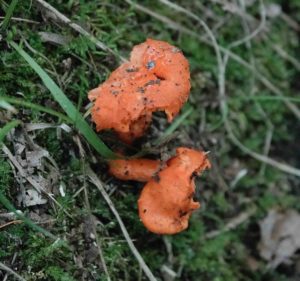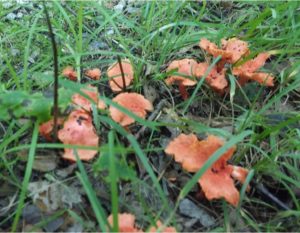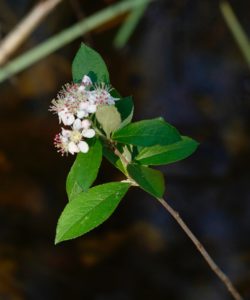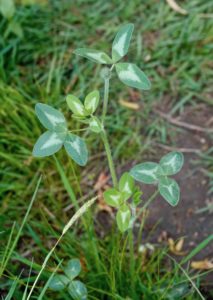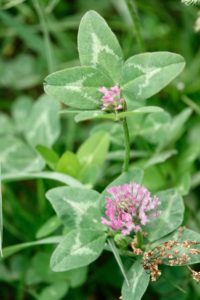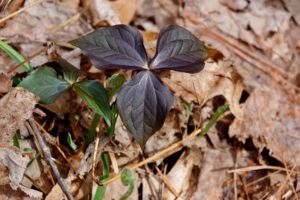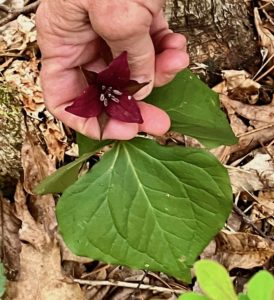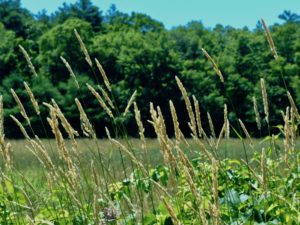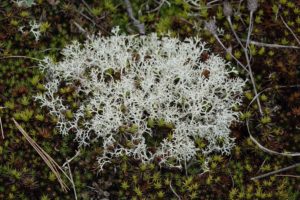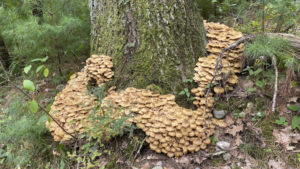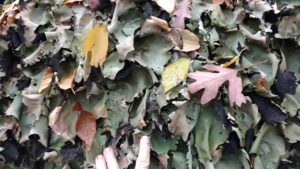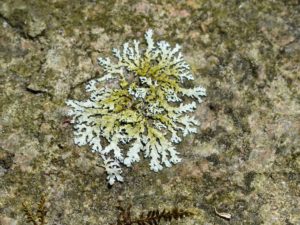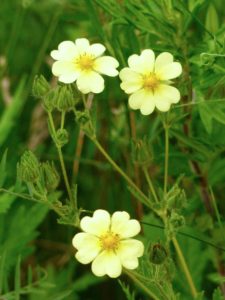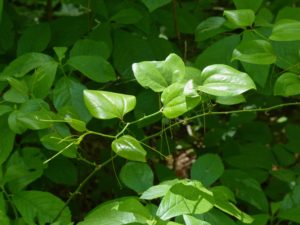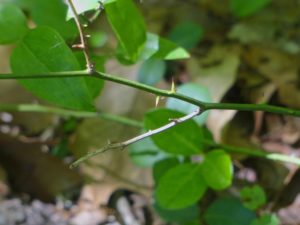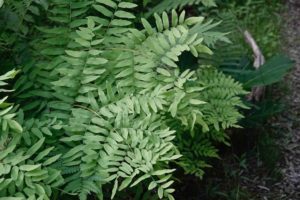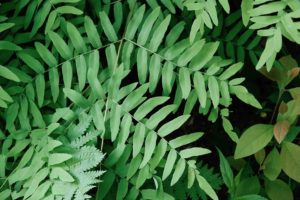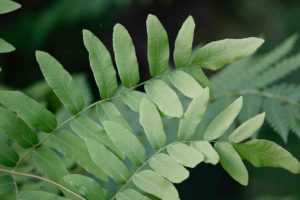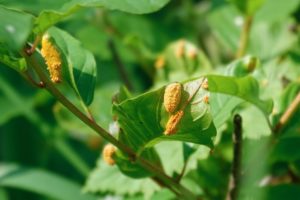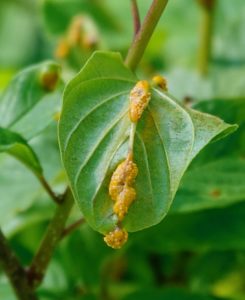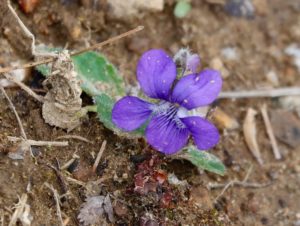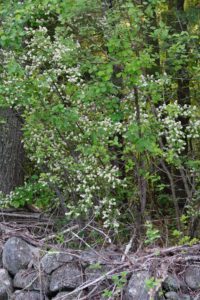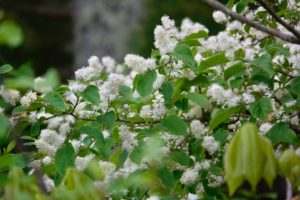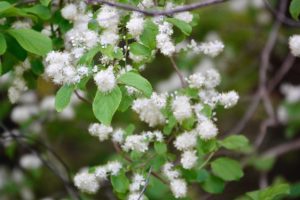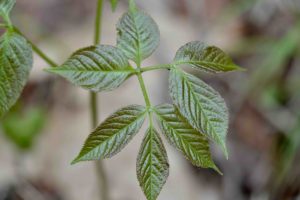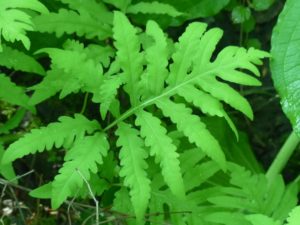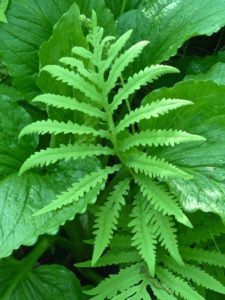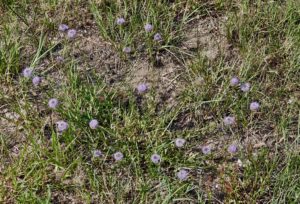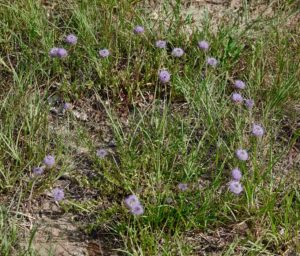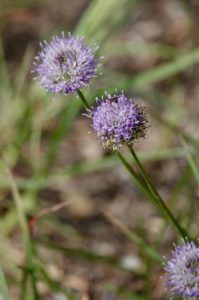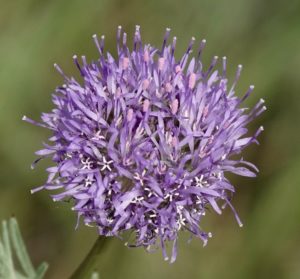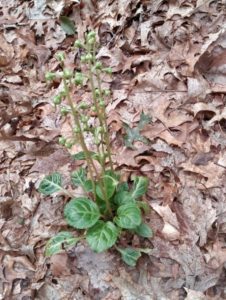Sightings – Plants
Observer: Paul Lauenstein
Observation Date: 5/16/23
Observation Time: 7:15 a.m.
Observation Location: Moose Hill Audubon Wildlife Sanctuary (boardwalk)
Common Name: Marsh Fern
Scientific Name: Thelypteris pelustris
Comments: This diminutive fern is typically found in wetlands.
More Information: Wikipedia
Observer: Susan Drisko
Observation Date: 4/27/2022
Observation Time: 1:45 p.m.
Observation Location: headwaters of Beaver Brook
Common Name: Marsh Marigold
Scientific Name: Caltha palustris
Comments: Caltha palustris, known as marsh-marigold and kingcup, is a small to medium size perennialherbaceousplant of the buttercup family, native to marshes, fens, ditches and wet woodlands in temperate regions of the Northern Hemisphere. It typically flowers between April and August.
More Information: Wikipedia
Observer: Peter Higgins
Observation Date: 10/17/08
Observation Time: 5:00 p.m.
Observation Location: Moose Hill Farm (Trustees of Reservations)
Common Name: Milkweed
Scientific Name: Asclepias syriaca
Comments: Milkweed is an important food source for butterflies, moths and other insect species. It has been decimated by the application of glyphosate herbicide (a.k.a. Roundup) on vast fields of corn and soybeans that have been genetically modified to tolerate glypohosate.
More Information: Scientific American
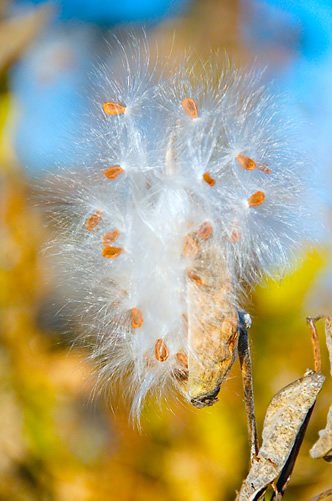

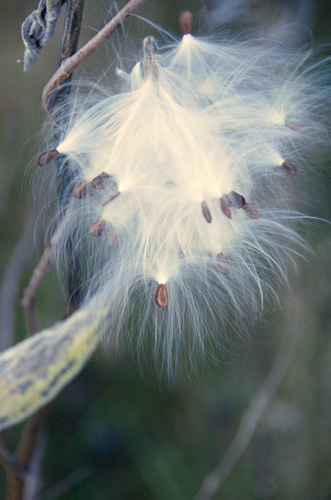
Observer: Paul Lauenstein
Observation Date: 7/22/15
Observation Time: 5:20 p.m.
Observation Location: Gavins Pond area
Common Name: Milkweed
Scientific Name: Asclepias syriaca
Comments: Monarch butterflies depend on milkweed as a food source for their caterpillars. The advent of genetically modified “Roundup-ready” corn and soybeans has facilitated large-scale application of herbicides, reducing the availability of milkweed to migrating monarchs. Hence, the monarch population is in steep decline. Homeowners wanting to help monarchs can inadvertently hurt them by planting the wrong kind of milkweed (Ophryocystis elektroscirrha). Unfortunately, native milkweed that monarchs need is harder to propagate.
More Information: Science
Observer: Paul Lauenstein
Observation Date: 6/27/15
Observation Time: 2:45 p.m.
Observation Location: Gavins Pond area
Common Name: Milkweed flower
Scientific Name: Asclepias syriaca
Comments: Many species of butterflies including monarchs depend on milkweed as a food source for their caterpillars. The advent of genetically modified “Roundup-ready” corn and soybeans has facilitated large-scale application of herbicides, reducing the availability of milkweed to migrating monarchs. Hence, the monarch population is in steep decline. Homeowners wanting to help monarchs can inadvertently hurt them by planting the wrong kind of milkweed (Ophryocystis elektroscirrha). Unfortunately, native milkweed that monarchs need is harder to propagate.
More Information: Science
Observer: Rita Corey
Observation Date: 6/23/19
Observation Time: 3:45 p.m.
Observation Location: 282 Mountain Street
Common Name: Mock Orange
Scientific Name: Philadelphus coronarius
Comments: Mock orange shrubs have flowers that are rich with nectar and attract butterflies. They are native to Southeast Europe and Italy.
More Information: the spruce
Observer: Paul Lauenstein
Observation Date: 6/9/19
Observation time: 4:15 p.m.
Observation Location: beginning of the trail at the end of Brook Road
Common Name: Money Flower (a.k.a. Honesty)
Scientific Name: Lunaria annua
Comments: The seed pods of the money flower are shaped like coins. This flower originated from the Balkans and southwest Asia. Its popularity as a garden flower means that colonies are most often seen near to towns and villages. It thrives in partial shade on woodland edges.
More information: First Nature
Observer: Paul Lauenstein
Observation Date: 5/30/20
Observation Time: 2:00 p.m.
Observation Location: Moose Hill Farm (TTOR)
Common Name: Mouse-ear chickweed
Scientific Name: Cerastium fontanum
Comments: Mouse-ear chickweed is a herb. Herbs are broad-leaved, herbaceous (non-woody) plants. Herbaceous plants are also known as forbs or wildflowers.
More Information: Kansas Native Plants
Observer: Deborah Radovsky
Observation Date: 6/7/20
Observation Time: 8:45 a.m.
Observation Location: Quincy St.
Common Name: Multiflora rose
Scientific Name: Rosa multiflora
Comments: Multiflora rose is a deciduous shrub with white flowers and red fruit. Brought here from Asia, it was planted as wildlife food, and also as a living fence, due to its dense growth and sharp thorns. It can grow to 10 feet high or more, and is typically wider than it is tall.
It forms dense thickets in fields and field edges, crowding out other species. It also grows in open wetlands and in forests where canopy openings occur.
More Information: Massachusetts Audubon
Observer: Paul Lauenstein
Observation Date: 4/13/23
Observation Time: 9:00 a.m.
Observation Location: Somewhere in Sharon
Common Name: Narrow-leaved Spring Beauty
Scientific Name: Claytonia virginica
Comments: Its scientific name honors Colonial Virginia botanist John Clayton (1694–1773).
Spring Beauty is an endangered species in Massachusetts. Please do not dig up any wildflowers you may find in Sharon. Please leave them for everyone to enjoy!
More Information: Massachusetts Natural Heritage and Endangered Species Program
Observer: Paul Lauenstein
Observation Date: 5/14/14
Observation Time: 10:50 a.m.
Observation Location: Sharon
Common Name: Narrow-leaved spring beauty
Scientific Name: Claytonia virginica L.
Comments: This rare wildflower is only found in nine towns in Massachusetts. Please do not dig up wildflowers!
More Information: Mass. Natural Heritage & Endangered Species Program
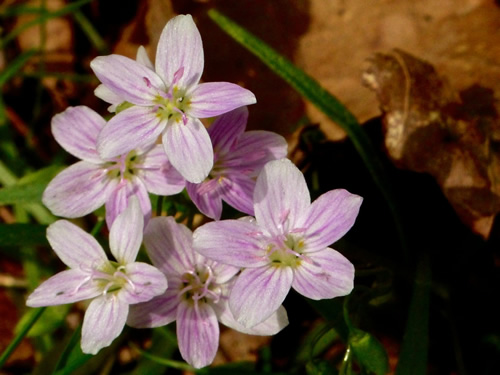
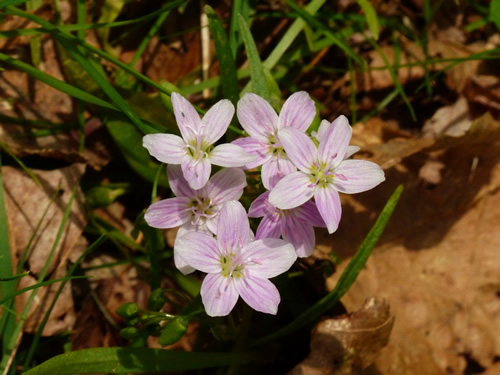
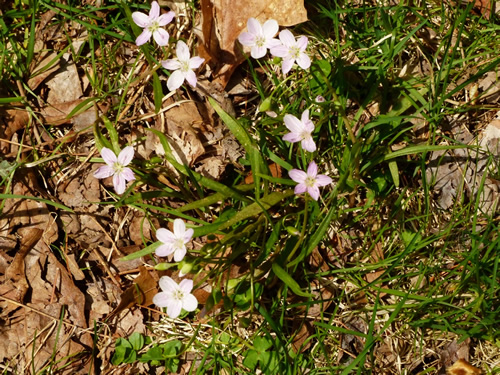
Observer: Paul Lauenstein
Observation Date: 5/7/19
Observation Time: 7:00 a.m.
Observation Location: Moose Hill Audubon Wildlife Sanctuary
Common Name: Narrow-leaved Spring Beauty
Scientific Name: Claytonia virginica
Comments: Its scientific name honors Colonial Virginia botanist John Clayton (1694–1773). Please do not dig up any wildflowers you may find in Sharon. Leave them for everyone to enjoy!
More Information: Wikipedia
Observer: Paul Lauenstein
Observation Date: 5/9/23
Observation Time: 8:15 a.m.
Observation Location: Somewhere in Sharon
Common Name: Narrow-leaved Spring Beauty
Scientific Name: Claytonia virginica
Comments: Its scientific name honors Colonial Virginia botanist John Clayton (1694–1773).
Spring Beauty is an endangered species in Massachusetts. Please do not dig up any wildflowers you may find in Sharon. Please leave them for everyone to enjoy!
More Information: Massachusetts Natural Heritage and Endangered Species Program
Observer: Paul Lauenstein
Observation Date: 8/18/20
Observation Time: 11:35 a.m.
Observation Location: Moose Hill Farm (formerly the Kendall Estate)
Common Name: New York Ironweed
Scientific Name: Vernonia noveboracensis
Comments: New York ironweed is a tall, perennial wildflower that produces small purple blossoms in August and September. This specimen is approximately 8 feet tall.
More Information: Lady Bird Johnson Wildflower Center
Observer: Paul Lauenstein
Observation Date: 6/9/20
Observation Time: 2:40 p.m.
Observation Location: Gavins Pond dam
Common Name: Norway Maple Tree
Scientific Name: Acer Platanoides
Comments: The Norway maple is native to eastern and central Europe and western Asia, from France east to Russia, north to southern Scandinavia and southeast to northern Iran. It was brought to North America in the mid-1700s as a shade tree. It is quite common in Sharon, and puts on a beautiful display in fall when its leaves turn yellow.
Like sugar maples, Norway maples can be tapped in late winter. Boiling down the sap produces a sweet, delicious syrup. It takes about 30 quarts of sap to produce one quart of syrup.
More Information: Wikipedia
Observer: Paul Lauenstein
Observation Date: 4/16/20
Observation Time: 1:45 p.m.
Observation Location: conservation land at Lakeview & Morse
Common Name: Old Man’s Beard lichen
Scientific Name: Usnea strigosa
Comments: Also called bushy beard, this epiphytic (i.e. growing on trees) lichen is a composite organism that emerges from algae or cyanobacteria living among the filaments of the fungi in a symbiotic (mutually beneficial) relationship. The fungi benefit from the carbohydrates produced by the algae or cyanobacteria via photosynthesis. The algae or cyanobacteria benefit by being protected from the environment by the filaments of the fungi, which also gather moisture and nutrients from the environment, and (usually) provide an anchor to it.
More Information: Wisconsin Dept. of Natural Resources
My friend Tom Palmer of Milton helped me identify this lichen, and provided this photo of some he found on the ground at Moose Hill Farm in Sharon on 5/4/18.
Observer: Paul Lauenstein
Observation Date: 5/28/23
Observation Time: 9:35 a.m.
Observation Location: Moose Hill Farm (TTOR)
Common Name: Orchard Grass
Scientific Name: Dactylis glomerata
Comments: Native to Europe, orchard grass has been introduced nearly worldwide. It came to North America in the 1700s, and is frequently planted as a forage grass.
More Information: Go Botany
Observer: Paul Lauenstein
Observation Date: 7/12/20
Observation Time: 6:45 p.m.
Observation Location: along Gavins Pond Road
Common Name: Oriental Bittersweet
Scientific Name: Celastrus orbiculatus
Comments: This non-native invasive species comes from Asia. It grows as a vine that smothers plants and can topple trees due to its weight.
It was introduced into the United States around 1860 as an ornamental plant. In fall, it produces attractive red and orange berry-like fruit. The stems are cut and used for decoration, which unfortunately facilitates its spread.
Here’s a short video explaining how to get rid of Oriental Bittersweet: https://www.youtube.com/watch?v=bRplW9_UhKg
Observer: Lonnie Friedman
Observation Date: 5/30/20
Observation Time: 5:00 pm
Observation Location: near Gavins Pond
Common Name: Oyster Mushroom
Scientific Name: Pleurotus ostreatus
Comments: This oyster mushroom was growing on a log. I believe it to be edible, but I did not dare test that hypothesis!
More Information: Wikipedia
Here’s the first photo taken 5/30/20:
To confirm the identification, I returned the following afternoon and took these photos to show the “gills” on the underside of the mushrooms:
Top view, photographed on 5/31/20 at around 1:15 pm:
Observer: Paul Lauenstein
Observation Date: 6/14/20
Observation Time: 5:20 p.m.
Observation Location: Moose Hill Farm (TTOR)
Common Name: Palmate Hop Clover
Scientific Name: Trifolium aureum
Comments: Palmate hop clover is an exotic species that is widespread in New England. The common name derives from the fact that as the flower heads age, the florets fold down and become brown, resembling dried hops.
More Information: Go Botany
Observer: Paul Lauenstein
Observation Date: 6/25/15
Observation Time: 2:25 p.m.
Observation Location: Town-owned conservation land at Morse and Lakeview Streets
Common Name: Palmate Hop Clover
Scientific Name: Trifolium aureum
Comments: Palmate hop clover is an exotic species that is widespread in New England. The common name derives from the fact that as the flower heads age, the florets fold down and become brown, resembling dried hops.
More Information: Go Botany
Observer: Paul Lauenstein
Observation Date: 6/15/13
Observation Time: 2:30 p.m.
Observation Location: Conservation land beyond Sandy Ridge Circle
Common Name: Panic Grass
Scientific Name: Dichanthelium sp.
Comments: There are numerous kinds of panic grasses. This one was growing in a wooded area along the trail that parallels Beaver Brook, beginning at the Sandy Ridge Circle cul-de-sac.
More Information: Cape May Plants
Observer: Josh Simons
Observation Date: 9/9/20
Observation Time: 11:00 a.m.
Observation Location: Moose Hill area
Common Name: Parasol mushroom
Scientific Name: Macrolepiota procera
Comments: iNaturalist says this is a parasol mushroom. I thought they had rounded caps, but I do see some flat tops when googling. This was large – maybe 5″ to 6″ in diameter. Very pretty.
More Information: Mushroom-Collecting.com
Observer: Paul Lauenstein
Observation Date: 6/26/10
Observation Time: 5:15 p.m.
Observation Location: Beaver Brook headwaters area
Common Name: Partridgeberry
Scientific Name: Mitchella repens
Comments: Called “noon kie oo nah yeah” in the Mohawk language.
More Information: US Forest Service
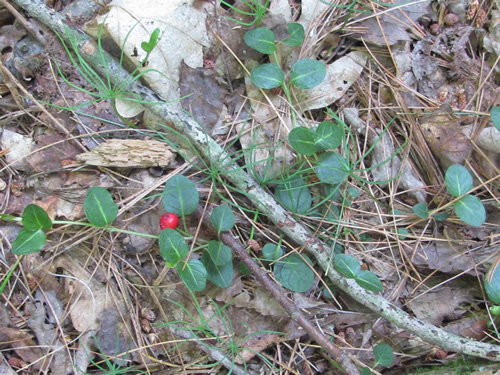
Observer: Paul Lauenstein
Observation Date: 5/24/10
Observation Time: 8:25 a.m.
Observation Location: 4 Gavins Pond Rd.
Common Name: Peony
Scientific Name: Paeonia spp.
Comments: Long ago, some observant gardener noticed that ants on peony buds always meant the flowers would open soon. And so a bit of folk wisdom was born: Peonies cannot open until ants eat away the seal that keeps the buds closed. But it isn’t true. The thing the ants are eating is nectar, not glue, and what this does for the peony is make sure there are plenty of ants around to eat any soft-bodied insects that might like to eat peonies.
More Information: Wikipedia
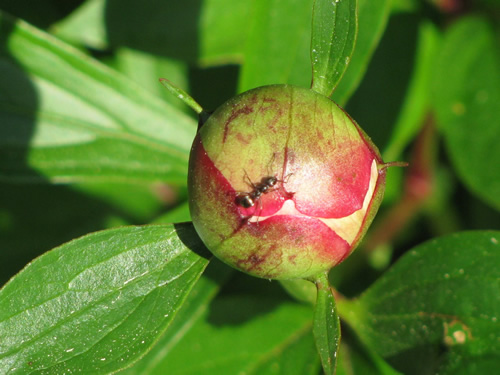
Observer: Paul Lauenstein
Observation Date: 5/19/19
Observation Time: 3:45 p.m.
Observation Location: Billings Loop Botanical Trail
Common Name: Pignut Hickory Tree
Scientific Name: Carya glabya
Comments: This tree is one of many plants identified along a botanical trail established by Kurt Buermann, President of the Sharon Friends of Conservation.
More Information: Wikipedia
Observer: Paul Lauenstein
Observation Date: 9/9/12
Observation Time: 2:50 p.m.
Observation Location: Sandy Ridge Circle
Common Name: Pigskin Poison Puffball
Scientific Name: Scleroderma citrinum
Comments: Also known as “common earthball,” this yellow-white spherical fungus has no stem. It eventually bursts open to release spores.
More Information: Common Earthball
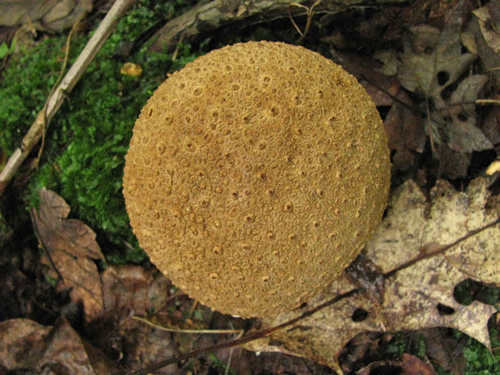
Observer: Paul Lauenstein
Observation Date: 5/11/20
Observation Time: 9:40 a.m.
Observation Location: near Gavins Pond
Common Name: Pink earth lichen
Scientific Name: Dibaeis baeomyces
Comments: This lichen is found throughout eastern North America, from Alabama and Georgia in the south to the Arctic Circle in the north. While rare there, it does occur in both Alaska and the Northwest Territories. It prefers to grow directly on unstable soils such as loose sand or dry clay, and in full sun. It also prefers acid soils to neutral or alkaline. On disturbed ground, a preferred habitat type, it is able to spread quickly for a lichen.
More Information: Wikipedia
Observer: Paul Lauenstein
Observation Date: 9/12/09
Observation Time: 11:00 a.m.
Observation Location: near Gavins Pond
Common Name: Pink Earth lichen
Scientific Name: Dibaeis baeomyces
More Information: Lichens of North America

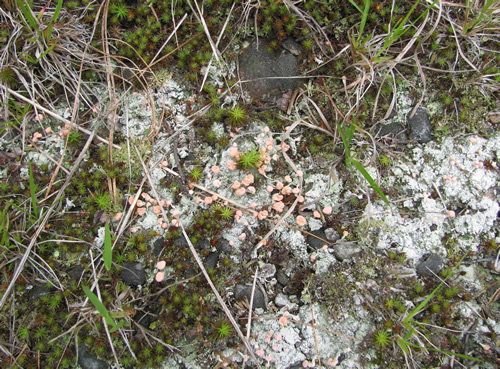
Observer: Paul Lauenstein
Observation Date: 5/27/20
Observation Time: 5:10 p.m.
Observation Location: in the woods near the footbridge over Beaver Brook
Common Name: Pink Lady’s Slipper orchid
Scientific Name: Cypripedium acaule
Comments: Pink lady’s slippers probably won’t survive if you try to transplant them, so please don’t dig them up.
More Information: Wikipedia
Observer: Paul Lauenstein
Observation Date: 5/22/18
Observation Time: 9:30 a.m.
Observation Location: Moose Hill Audubon Wildlife Sanctuary
Common Name: Pink Lady’s Slipper orchid
Scientific Name: Cypripedium acaule
Comments: Pink lady’s slippers probably won’t survive if you try to transplant them, so please don’t dig them up.
More Information: Wikipedia
Observer: Paul Lauenstein
Observation Date: 5/27/14
Observation Time: 9:05 p.m.
Observation Location: Moose Hill Audubon Wildlife Sanctuary
Common Name: Pink Lady’s Slipper orchid
Scientific Name: Cypripedium acaule
Comments: Pink lady’s slippers won’t survive if you try to transplant them, so please don’t dig them up.
More Information: Wikipedia
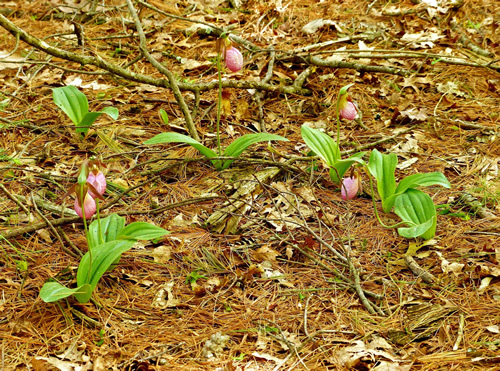
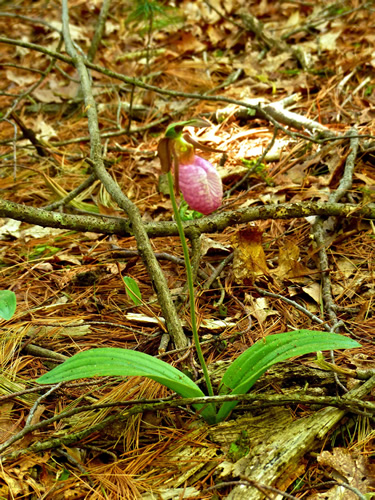
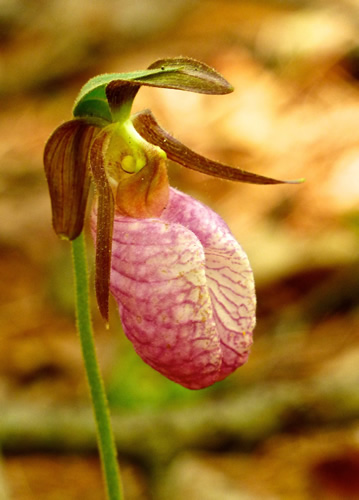
Observer: Josh Simons
Observation Date: 5/31/20
Observation Time: 10:30 a.m.
Observation Location: Moose Hill area
Common Name: Pink Lady’s Slipper orchid
Scientific Name: Cypripedium acaule
Comments: Pink lady’s slippers probably won’t survive if you try to transplant them, so please don’t dig them up.
More Information: Wikipedia
Observer: Paul Lauenstein
Observation Date: 6/13/20
Observation Time: 5:55 p.m.
Observation Location: Moose Hill Wildlife Sanctuary
Common Name: Platterful Mushroom
Scientific Name: Megacollybia rodmani
Comments: Platterful mushrooms appear after May and June rains. It had rained heavily two days earlier. This one was growing on a rotting log beside the trail.
More Information: Mushroomexpert.com
Top view:
Observer: Paul Lauenstein
Observation Date: 5/23/18
Observation Time: 9:35 a.m.
Observation Location: Moose Hill Farm (TTOR)
Common Name: Poison Ivy
Scientific Name: Toxicodendron radicans
Comments: Everyone should learn to identify poison ivy and avoid contact with its glossy, notched leaves. As both its common name and its scientific name suggest, the triplicate leaves of this plant can cause an intensely itchy rash that lasts for weeks. Jewelweed, which often grows near poison ivy, is also an antidote for poison ivy.
Poison ivy is often seen in disturbed areas along roads and paths, but it can also climb up trees as a thick vine. When ripe, the white fruits are a favorite food of many migrant and game birds, as well as white-tailed deer. The seeds are adapted for sprouting after digestion softens the seed coat.
More Information: Go Botany
Observer: Paul Lauenstein
Observation Date: 5/25/23
Observation Time: 6:45 a.m.
Observation Location: Moose Hill Audubon Wildlife Sanctuary (wetland boardwalk)
Common Name: Poison Sumac
Scientific Name: Toxicodendron vernix
Comments: Everyone should learn to identify poison sumac and avoid contact with it. As both its common name and its scientific name suggest, the leaves of this plant can cause an itchy rash.
Poison sumac is often found in marshy areas.
More Information: Healthline
Observer: Paul Lauenstein
Observation Date: 6/24/10
Observation Time: 3:40 p.m.
Observation Location: Beaver Brook near tennis courts
Common Name: Princess pine
Scientific Name: Dendrolycopodium obscurum
Comments: Despite its name and pine-like appearance, princess pine is not related to pine trees. It’s actually a type of clubmoss, an ancient group of plants that had its heyday long before there were pines, dinosaurs, or flowering plants. Also known as “ground cedar,” it is also called “fan clubmoss” because of its fan-like branches. It grows from a creeping stem at the soil surface.
More Information: Westborough Land Trust

Observer: Paul Lauenstein
Observation Date: 9/20/15
Observation Time: 4:20 p.m.
Observation Location: Lake Massapoag (near boat ramp)
Common Name: Puffball mushroom
Scientific Name: Genus: Calvatia, Bovista and others
Comments: There are many kinds of puffballs. Some are edible and some are poisonous.
More Information: eattheplanet.org
Observer: Paul Lauenstein
Observation Date: 6/13/20
Observation Time: 5:15 p.m.
Observation Location: Moose Hill Audubon Wildlife Sanctuary
Common Name: Purple Foxglove
Scientific Name: Digitalis purpurea
Comments: Purple foxglove, Digitalis purpurea, is a biennial or short-lived herbaceous perennial from western Europe in the plantain family. It is sometimes called common foxglove, fairy gloves, fairy bells, or lady’s glove. Purple foxglove is naturally quite variable in size and flower color.
As its scientific name suggests, foxglove was the source of chemicals in the drug digitalis.
More Information: University of Wisconsin
Observer: Paul Lauenstein
Observation Date: 9/12/09
Observation Time: 11:20 a.m.
Observation Location: Gavins Pond
Common Name: Purple Loosestrife
Scientific Name: Lythrum salicaria L.
Comments: Sometimes called “purple plague,” purple loosestrife is an invasive species. Neponset River Watershed Association has a program to propagate and disperse galerucella beetles that eat nothing but purple loosestrife.
More Information: The Nature Conservancy
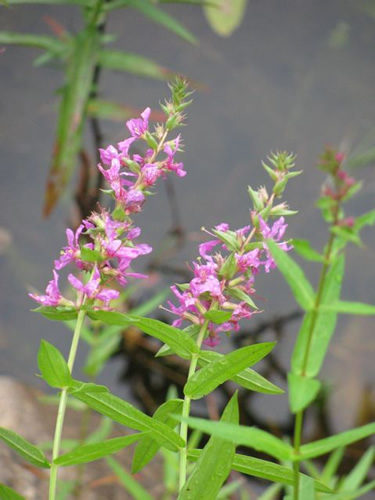
Observer: Paul Lauenstein
Observation Date: 5/29/14
Observation Time: 11:30 a.m.
Observation Location: Borderland State Park
Common Name: Purple pitcherplant
Scientific Name: Sarracenia purpurea
Comments: This carnivorous plant captures and digests hapless insects.
More Information: Harvard Forest
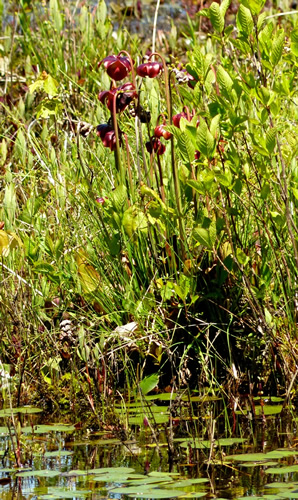
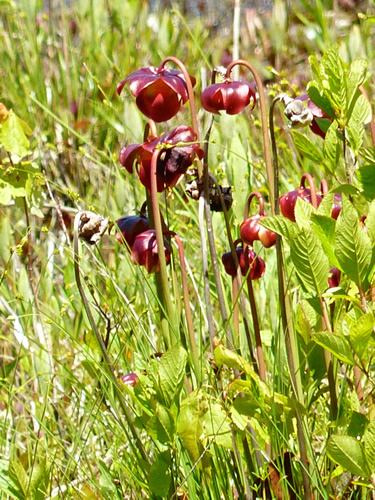
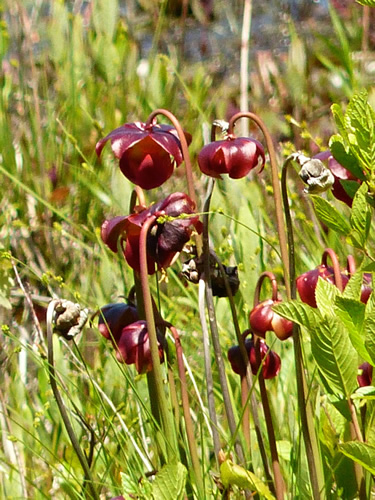
Observer: Paul Lauenstein
Observation Date: 4/13/13
Observation Time: 5:50 p.m.
Observation Location: near Gavins Pond
Common Name: Pussy Willow
Scientific Name: Salix discolor
Comments: The fuzzy nubs that appear on pussy willows in early spring are actually flowers just before they fully bloom. The species most commonly called pussy willow in the Northeast, Salix discolor, is a small, shrubby species of willow that can be found dotting wetlands and moist woods throughout much of North America.
More Information: Brooklyn Botanic Garden
Observer: Paul Lauenstein
Observation Date: 7/22/15
Observation Time: 5:20 p.m.
Observation Location: Gavins Pond area
Common Name: Queen Anne’s Lace
Scientific Name: Daucus carota
Comments: Daucus carota, whose common names include wild carrot, bird’s nest, bishop’s lace, and Queen Anne’s lace (North America), is a white, flowering plant in the family Apiaceae, native to temperate regions of Europe and southwest Asia, and naturalized to North America and Australia.
Domesticated carrots are cultivars of a subspecies, Daucus carota subsp. sativus.
More Information: Wikipedia
Observer: Paul Lauenstein
Observation Date: 5/23/18
Observation Time: 8:10 a.m.
Observation Location: Moose Hill Audubon Wildlife Sanctuary
Common Name: Rattlesnake Root
Scientific Name: Prenanthes sp.
Comments: Roots look like the rattle of a rattlesnake.
More Information: Youtube
Observer: Paul Lauenstein
Observation Date: 6/9/20
Observation Time: 4:05 p.m.
Observation Location: trail near Brook Road
Common Name: Three-leaved Rattlesnake Root
Scientific Name: Nabalus trifoliolatus
Comments: Three-leaved rattlesnake-root is found throughout New England. It has a trumpet-shaped white flower that blooms in late summer.
More Information: GoBotany
Observer: Paul Lauenstein
Observation Date: 6/9/19
Observation Time: 4:05 p.m.
Observation Location: trail near Brook Road
Common Name: Three-leaved Rattlesnake Root
Scientific Name: Nabalus trifoliolatus
Comments: The leaves of this species of rattlesnake root look quite different from the arrowhead-shaped leaves of other kinds of rattlesnake root.
More Information: GoBotany
Observer: Lonnie Friedman
Observation Date: 7/11/20
Observation Time: 3:20 p.m.
Observation Location: Moose Hill Audubon Wildlife Sanctuary
Common Name: Red Chanterelle Mushroom
Scientific Name: Cantharellus cinnabarinus
Comments: Red chanterelles are fungi native to eastern North America. They are members of the genus Cantharellus along with other chanterelles. They are named after their red color, which is imparted by the carotenoid canthaxanthin. They are edible, fruiting in association with hardwood trees in the summer and fall.
It looks like something was chewing on the red chanterelles in these photos. It is a bad idea to ingest wild mushrooms unless you are absolutely certain you know what your are eating, because many mushrooms are poisonous.
More Information: iNaturalist
Observer: Kurt Buermann
Observation Date: 7/30/2017
Observation Time: N/A
Observation Location: Rattlesnake Hill, Sharon
Common Name: Red Chanterelle mushroom (a.k.a. Cinnabar Chanterelle mushroom)
Scientific Name: Cantharellus cinnabarinus
Comments: Sought after edible mushroom with slight peppery taste and slight apricot aroma.
DON’T EAT WILD MUSHROOMS UNLESS YOU ARE ABSOLUTELY SURE THEY ARE NOT POISONOUS!
More Information: The Mushroom Forager
Observer: Paul Lauenstein
Observation Date: 5/9/23
Observation Time: 7:30 a.m.
Observation Location: Moose Hill Audubon Wildlife Sanctuary (in wetland)
Common Name: Red Chokeberry
Scientific Name: Aronia arbutifolia
Comments: In eastern North America, two well-known chokeberry species are named after their fruit color, red chokeberry and black chokeberry, plus a purple chokeberry whose origin is a natural hybrid of the two. and Florida Wildflower Foundation
More Information: Florida Wildflower Foundation and Wikipedia
Observer: Paul Lauenstein
Observation Date: 5/31/20
Observation Time: 4:40 p.m.
Observation Location: Moose Hill Farm (TTOR)
Common Name: Red clover
Scientific Name: Trifolium pratense
Comments: Clover is widely grown as a fodder crop, valued for its nitrogen fixation, which increases soil fertility. For these reasons, it is used as a green manure crop.
This specimen had not yet produced its reddish flowers, but the two-tone pattern on its leaves is characteristic of red clover.
More Information: Wikipedia
I took this photo near the same location on 6/2/20:
Observer: Paul Lauenstein
Observation Date: 6/4/10
Observation Time: 12:10 p.m.
Observation Location: Gavins Pond Road soccer field parking lot
Common Name: Red clover
Scientific Name: Trifolium pratense
Comments: It is widely grown as a fodder crop, valued for its nitrogen fixation, which increases soil fertility. For these reasons, it is used as a green manure crop.
More Information: Wikipedia
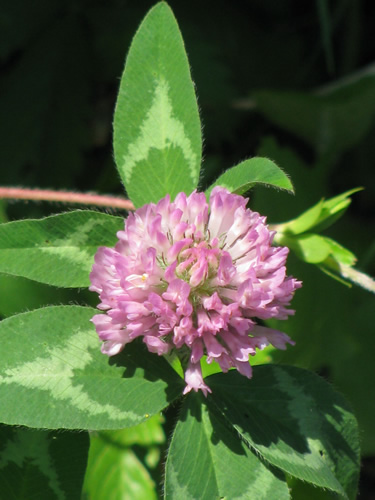
Observer: Susan Drisko
Observation Date: 4/27/2022
Observation Time: 3:25 p.m.
Observation Location: Town-owned conservation land near Moose Hill Audubon Wildlife Sanctuary
Common Name: Red Trillium
Scientific Name: Trillium erectum
Comments: Native to eastern North America, the red trillium (Trillium erectum) is found on forest floors. Its components surface in groups of three as pointed triple leaves, giving way to three-petalled flowers. Red trillium is mildly toxic to humans. The flowers smell like rotting meat so as to attract pollinating flies.
PLEASE DO NOT DIG UP WILD PLANTS.
More Information: Wikipedia
Observer: Paul Lauenstein
Observation Date: 7/7/18
Observation Time: 12:50 p.m.
Observation Location: Moose Hill Farm (TTOR)
Common Name: Reed Canary Grass
Scientific Name: Phalaris arundinacea
Comments: Reed canary grass has become invasive or problematic in New England and across North America, and the invasive plants may be the Eurasian genotype.
More Information: GoBotany
Observer: Paul Lauenstein
Observation Date: 5/18/20
Observation Time: 10:20 a.m.
Observation Location: under high tension lines across the street from the Gavins Pond soccer fields
Common Name: Reindeer lichen
Scientific Name: Cladonia rangiferina
Comments: Reindeer lichen is a light-colored, fruticose lichen belonging to the family Cladoniaceae. It grows in both hot and cold climates in well-drained, open environments. As the common names suggest, reindeer lichen is an important food for reindeer (caribou) and has economic importance as a result. Reindeer lichen, like many lichens, is slow growing (3–11 mm per year) and may take decades to return once overgrazed, burned, trampled, or otherwise consumed.
More Information: Wilipedia
Observer: Josh Simons
Observation Date: 9/17/20
Observation Time: 3:00 p.m.
Observation Location: Moose Hill area
Common Name: Ringless Honey Mushroom
Scientific Name: Armillaria tabescens
Comments: These ringless mushrooms extended almost all the way around the tree.
WARNING: This is NOT a beginner’s mushroom. Never eat any wild plant unless you are 100% sure that you have identified an edible species.
More Information: The Foraged Foodie
Observer: Kathy Farrell
Observation Date: 10/30/2018
Observation Time: N/A
Observation Location: Mountain Street
Common Name: Rock Tripe lichen
Scientific Name: Umbilicaria mammulata
Comments: This lichen is edible (after boiling several times). It is considered to be “starvation food.” There are stories of George Washington’s troops eating it when they had nothing else. I found it in a rocky cliff area.
More Information: https://www.youtube.com/watch?v=STxqLRmK03c and https://www.adirondackalmanack.com/2010/04/ruminations-on-rock-tripe.html
Observer: Paul Lauenstein
Observation Date: 4/16/19
Observation Time: 12:55 p.m.
Observation Location: Moose Hill Audubon Wildlife Sanctuary
Common Name: Rock-shield Lichen
Scientific Name: Xanthoparmelia sp.
Comments: A lichen is a composite organism that emerges from algae or cyanobacteria living among the filaments of the fungi in a symbiotic (mutually beneficial) relationship. The fungi benefit from the carbohydrates produced by the algae or cyanobacteria via photosynthesis. The algae or cyanobacteria benefit by being protected from the environment by the filaments of the fungi, which also gather moisture and nutrients from the environment, and (usually) provide an anchor to it.
More Information: Project Noah and Wikipedia
Observer: Paul Lauenstein
Observation Date: 6/14/20
Observation Time: 4:30 p.m.
Observation Location: Moose Hill Farm (TTOR)
Common Name: Rough-fruited Cinquefoil
Scientific Name: Potentilla recta
Comments: Also known as sulphur cinquefoil, this wildflower is native to Europe and Asia. Introduced and naturalized in North America. Found along roads and in disturbed sites. Thrives in full sun and tolerates dry conditions. Flowers from June to August. Blossoms have five heart-shaped petals.
More Information: MinnesotaSeasons.com
Observer: Paul Lauenstein
Observation Date: 6/20/11
Observation Time: 3:25 p.m.
Observation Location: Gavins Pond
Common Name: Rough-fruited cinquefoil
Scientific Name: Potentilla recta
Comments: Native to Europe and Asia. Introduced and naturalized in North America. Found along roads and in disturbed sites. Thrives in full sun and tolerates dry conditions. Flowers from June to August.
More Information: MinnesotaSeasons.com
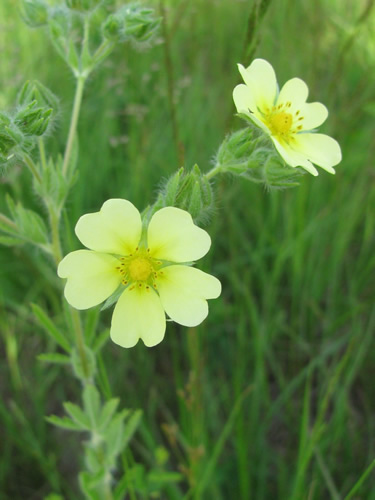

Observer: Paul Lauenstein
Observation Date: 7/13/15
Observation Time: 4:10 p.m.
Observation Location: Gavins Pond
Common Name: Rough-fruited cinquefoil
Scientific Name: Potentilla recta
Comments: Also known as sulphur cinquefoil, this wildflower is native to Europe and Asia. Introduced and naturalized in North America. Found along roads and in disturbed sites. Thrives in full sun and tolerates dry conditions. Flowers from June to August. Blossoms have five heart-shaped petals.
More Information: MinnesotaSeasons.com
Observer: Paul Lauenstein
Observation Date: 6/9/19
Observation time: 2:50 p.m.
Observation Location: along trail near Brook Road
Common Name: Roundleaf Greenbriar
Scientific Name: Smilax rotundifolia
Comments: Greenbriar vines, often found near wetlands, have glossy, rounded leaves and large, sharp thorns. The tips of the vines are edible.
More information: Marblehead Conservancy
Observer: Paul Lauenstein
Observation Date: 5/12/11
Observation Time: 6:45 a.m.
Observation Location: Moose Hill Audubon Wildlife Sanctuary board walk
Common Name: Royal Fern
Scientific Name: Osmunda regalis
Comments: The royal fern belongs to the family Osmundaceae; fossils belonging to this family have been found in rocks of Permian age (230,000,000 years before present), a time when the continents were consolidated into the supercontinent Pangea.
More Information: Wikipedia
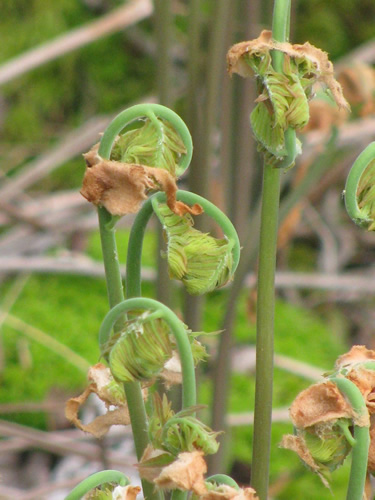
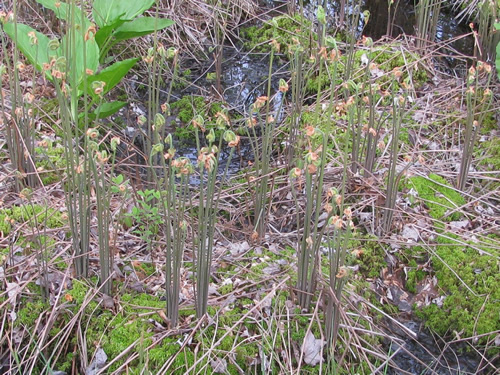
Observer: Paul Lauenstein
Observation Date: 5/16/23
Observation Time: 7:15 a.m.
Observation Location: Moose Hill Audubon Wildlife Sanctuary
Common Name: Royal Fern
Scientific Name: Osmunda regalis
Comments: The royal fern belongs to the family Osmundaceae; fossils belonging to this family have been found in rocks of Permian age (230,000,000 years before present), a time when the continents were consolidated into the supercontinent Pangea.
More Information: Wikipedia
Observer: Paul Lauenstein
Observation Date: 6/13/20
Observation Time: 5:50 p.m.
Observation Location: Moose Hill Audubon Wildlife Sanctuary
Common Name: Royal Fern
Scientific Name: Osmunda regalis
Comments: The royal fern belongs to the family Osmundaceae; fossils belonging to this family have been found in rocks of Permian age (230,000,000 years before present), a time when the continents were consolidated into the supercontinent Pangea.
More Information: Wikipedia
Observer: Paul Lauenstein
Observation Date: 6/9/13
Observation Time: 4:00 p.m.
Observation Location: Gavins Pond area
Common Name: Rugosa Rose
Scientific Name: Rosa rugosa
Comments: In late summer, this beautiful flower, which comes from Asia, will become a reddish ball called a rose hip. Rose hips are used for tisanes, jam, jelly, syrup, soup, beverages, pies, bread, wine, and marmalade. They can also be eaten raw, like a berry, if care is used to avoid the hairs inside the fruit.
More Information: Wikipedia

Observer: Paul Lauenstein
Observation Date: 9/9/12
Observation Time: 3:10 p.m.
Observation Location: Sandy Ridge Circle
Common Name: Russula mushroom
Scientific Name: Russula spp.
Comments: I don’t know which species of Russula this specimen happens to be.
More Information: Wikipedia
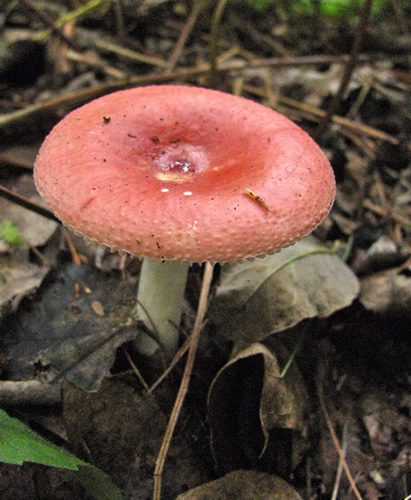
Observer: Paul Lauenstein
Observation Date: 5/28/23
Observation Time: 9:10 a.m.
Observation Location: Moose Hill Farm (TTOR)
Common Name: Rust Fungus
Scientific Name: genus Pucciniaceae
Comments: Rust fungus is a plant disease. This rust fungus was growing on buckthorn leaves.
More Information: Wikipedia
Observer: Paul Lauenstein
Observation Date: 4/28/23
Observation Time: 11:00 a.m.
Observation Location: Moose Hill Audubon Wildlife Sanctuary
Common Name: Sand Violet (also known as Hookedspur Violet)
Scientific Name: Viola adunca
Comments: Sand violet grows where the soil has been disrupted and exposed. I saw this one in an eroded area beside a sloping trail. Sand violet is listed as a species of special concern in Massachusetts. It is illegal to dig them up.
More Information: Massachusetts Natural History and Endangered Species Program (NHESP)
Observer: Paul Lauenstein
Observation Date: 5/23/23
Observation Time: 7:00 a.m.
Observation Location: Moose Hill Audubon Wildlife Sanctuary
Common Name: Sapphire Berry
Scientific Name: Synplocos paniculata
Comments: Sapphire Berry is a non-native shrub. Since it is a non-native species that spreads and displaces native plants, the specimen shown in the photo will be removed.
More Information: Wikipedia
Observer: Paul Lauenstein
Observation Date: 5/17/20
Observation Time: 10:10 a.m.
Observation Location: woods near Gavins Pond
Common Name: Sarsaparilla
Scientific Name: Aralia nudicaulis
Comments: On a whim, I decided to photograph a random plant along the trail in the woods. A friend helped me identify it, and it turned out to have a story!
Wild sarsaparilla is a 1-2 foot tall shrub common to the forest understories of southern New England. It produces tiny white flowers in spherical clusters beneath the compound leaves, which ripen into blue-black berries in mid-summer. The rhizome of wild sarsaparilla has a sweet, aromatic taste, and sometimes has substituted for sassafras in the making of home-made root beer.
More Information: Go Botany
Observer: Paul Lauenstein
Observation Date: 6/26/10
Observation Time: 3:25 p.m.
Observation Location: headwaters of Beaver Brook
Common Name: Sassafras
Scientific Name: Sassafras albidum
Comments: Sassafras albidum is a medium-sized deciduous tree growing to 15–20 m (49–66 ft) tall, with a canopy up to 12 m (39 ft) wide, with a trunk up to 60 cm (24 in) in diameter, and a crown with many slender sympodial branches. The bark on trunk of mature trees is thick, dark red-brown, and deeply furrowed.
More Information: Wikipedia
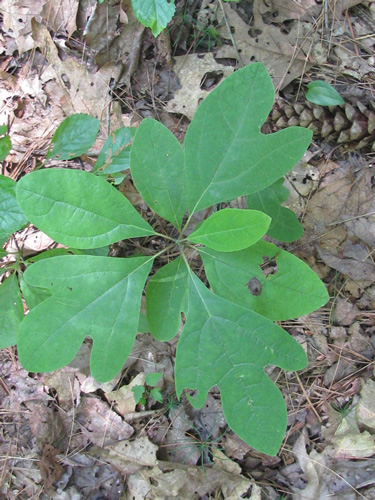
Observer: Paul Lauenstein
Observation Date: 5/23/18
Observation Time: 7:25 a.m.
Observation Location: Moose Hill Audubon Wildlife Sanctuary (Billings loop)
Common Name: Sensitive Fern
Scientific Name: Onoclea sensibilis
Comments: The susceptibility to frost of the sterile fronds gives sensitive fern its name. It spreads rapidly and can form large colonies. The spores are not released until the spring following the season in which the fertile fronds are produced.
More Information: Go Botany
Observer: Paul Lauenstein
Observation Date: 6/21/20
Observation Time: 4:30 p.m.
Observation Location: Along Gavins Pond Road
Common Name: Sheep’s bit
Scientific Name: Jasione montana
Comments: Sheep’s bit is an annual or biennial, native to Europe and Russia and introduced to North America’s east and west coasts. It was introduced through being grown as a garden ornamental, and is spreading westward from sandy sites in southern New England.
More Information: Go Botany
Observer: Rita Corey and Larry Myatt
Observation Date: 7/9/20
Observation Time: 9:18 a.m.
Observation Location: Mountain Street, near entrance to Rattlesnake Hill
Common Name: Shinleaf (a.k.a. White Wintergreen)
Scientific Name: Pyrola elliptica
Comments: Its common name, shinleaf, comes from the medicinal use of the plant, which produces a drug similar to aspirin. This drug has been reported to have analgesic properties and was used on bruised shins and other wounds. A plaster made from the leaves was called a shin plaster.
More Information: NC State Extension

